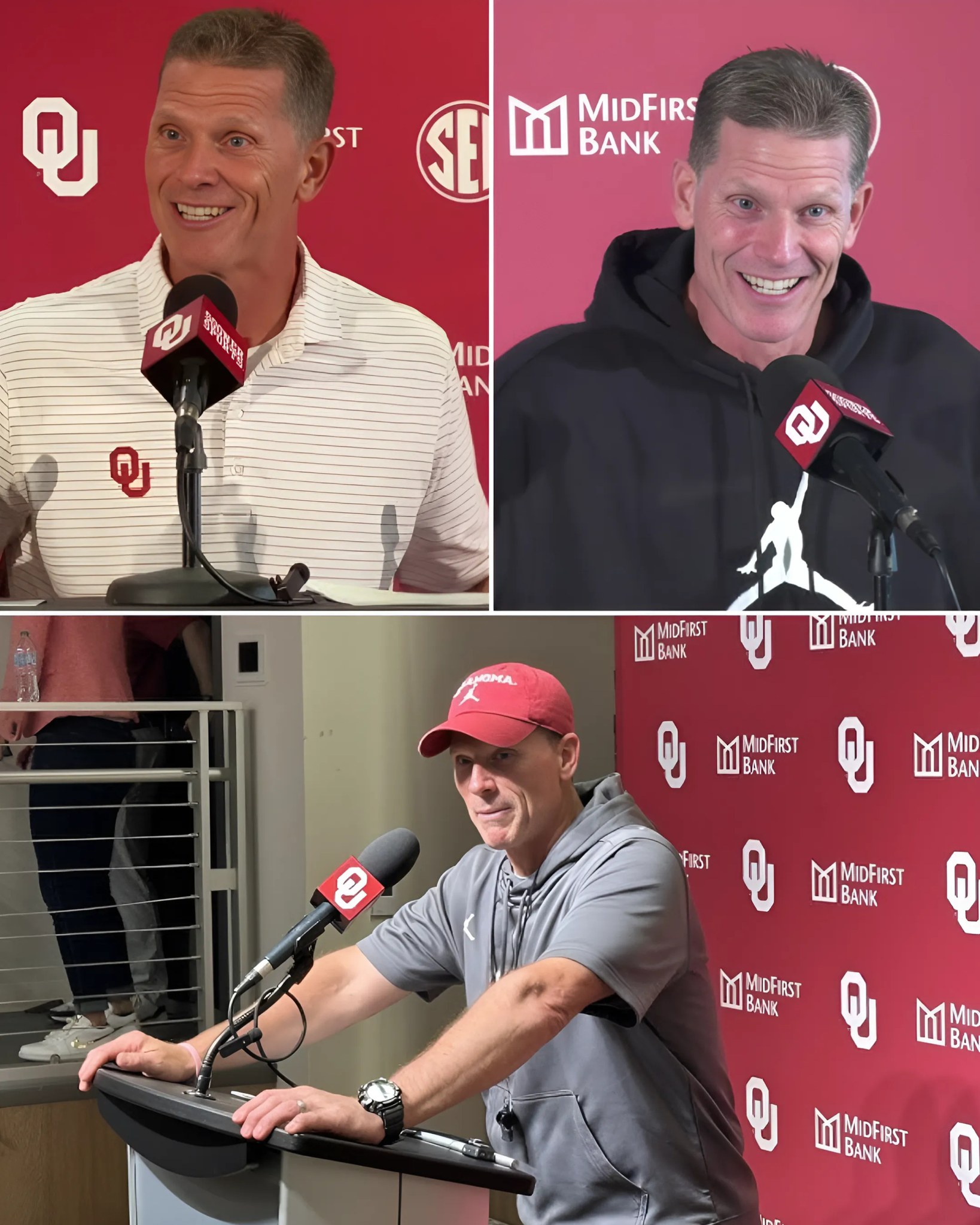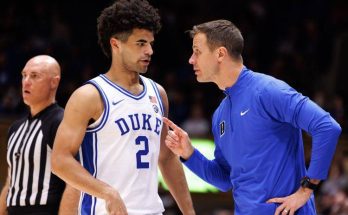The Oklahoma Sooners football program, long renowned for its rich tradition of excellence and its commitment to developing some of the finest athletes in college football history, entered the summer of 2025 with significant momentum. The Sooners had already been making waves in the recruiting landscape, thanks largely to the strategic leadership of their head coach, Brent Venables. Known for his defensive prowess and intense coaching style, Venables had successfully transitioned the program into a renewed powerhouse, focusing heavily on bringing in top-tier talent that could immediately impact the team’s competitiveness in the fiercely competitive Big 12 Conference.
Amid this backdrop of excitement and hope, two recruits began to symbolize the bright future of Oklahoma football: Bowe Bentley, the Sooners’ 2026 quarterback commit, and Tyler Ruxer, a highly coveted four-star tight end. Both young men represented not only outstanding individual talent but also the promise of a dynamic and balanced offense capable of dazzling Sooners fans for years to come.
Bowe Bentley, hailing from Celina, Texas, had already made headlines with his commitment to Oklahoma. As a four-star quarterback, Bentley was a prized recruit whose skill set aligned perfectly with what the Sooners were looking for in a future franchise signal-caller. Known for his strong arm, mobility, and football IQ, Bentley was seen as a potential cornerstone for Oklahoma’s offense in the coming seasons. His commitment had energized the fanbase and provided the Sooners coaching staff with a critical piece of their long-term vision at the most important position on the field.
Then, on July 7, 2025, the excitement surged to a new high when head coach Brent Venables and his recruiting team announced the addition of Tyler Ruxer, a four-star tight end, to the 2026 class. Ruxer’s commitment was more than just a routine signing—it was a statement. The talented tight end from the Dallas-Fort Worth area had been highly sought after by multiple programs, and his decision to join the Sooners indicated that Oklahoma was successfully reasserting itself as a destination for elite football talent. His blend of size, athleticism, and receiving ability made him a matchup nightmare for opposing defenses, and the Sooners envisioned him as a critical weapon in their offensive scheme.
Upon hearing the news, Bowe Bentley took to social media, choosing the platform X (formerly known as Twitter) to express his enthusiasm and rally the Sooners community. Bentley posted an energized message: “Norman let’s get it! BOOMER SOONER!” alongside the announcement of Ruxer’s commitment. This simple yet powerful post captured the spirit of optimism shared by the players, coaches, and fans alike. It underscored the growing sense of camaraderie and unity within the Sooners family and hinted at the exciting possibilities that lay ahead once these two young stars joined forces on the field.
Bentley’s public enthusiasm for Ruxer’s commitment was telling. In the world of college football recruiting, chemistry between teammates—especially among skill position players—can be just as important as individual talent. The fact that Bentley was not only aware of but also visibly excited about Ruxer’s decision suggested that these two recruits could form a meaningful connection early on, even before their college careers began. This kind of early rapport bodes well for building offensive cohesion, as quarterbacks and their receivers often need time to develop trust and familiarity.
The Sooners’ recruiting success in landing Tyler Ruxer was particularly significant because the tight end position had become increasingly vital in modern college offenses. Tight ends today are no longer just blockers or safety valves for quarterbacks; they are versatile playmakers who can stretch the field, create mismatches against linebackers or safeties, and provide a reliable target in critical situations. Ruxer’s skill set fit perfectly into this mold, and the Sooners coaches were eager to harness his abilities to diversify and elevate their offensive attack.
Furthermore, Ruxer’s signing symbolized the growing impact of head coach Brent Venables’ recruiting efforts. Venables, known primarily for his defensive coaching acumen during his tenure at Clemson before taking the helm at Oklahoma, had demonstrated a clear commitment to building a well-rounded roster. His emphasis on securing top offensive talent such as Bentley and Ruxer reflected an understanding that championship-caliber teams must excel on both sides of the ball. Venables’ ability to attract and develop versatile athletes like Ruxer indicated that Oklahoma was making strides toward reclaiming its status as a national powerhouse.
The story of Bowe Bentley’s journey to Oklahoma also added layers of interest and hope. As a four-star recruit from Celina, Texas, Bentley had carved out a reputation as a dynamic quarterback capable of making plays both with his arm and his legs. His decision to commit to the Sooners was viewed as a major win for Oklahoma, particularly because Texas is a hotbed of football talent, and recruiting in the Lone Star State is fiercely competitive. Bentley’s commitment helped the Sooners extend their recruiting reach beyond their home state and tap into one of the deepest pools of high school talent in the country.
For Bentley, joining Oklahoma represented an opportunity to develop under a coaching staff committed to maximizing his potential. The Sooners’ offensive scheme was designed to allow a mobile, intelligent quarterback to thrive, blending traditional power football with modern spread concepts. This balanced approach allowed Bentley to showcase his arm strength, accuracy, and decision-making while also leveraging his athleticism to extend plays and make critical runs when needed.
Likewise, for Tyler Ruxer, Oklahoma offered a platform to compete at the highest level of college football. Playing in the Big 12 meant regular matchups against some of the nation’s top defenses, providing Ruxer with a stage to prove himself and elevate his draft stock for the NFL. The Sooners’ tradition of developing NFL-caliber tight ends added further appeal, as past players had successfully made the transition to professional football. With his physical attributes and skill set, Ruxer was positioned to become another link in that chain of success.
The impact of these commitments extended beyond just the immediate 2026 class. For the Oklahoma program, landing Bentley and Ruxer sent a strong message to other recruits and fans alike: Oklahoma was back in the recruiting conversation as a top-tier destination for elite football talent. It reinforced the narrative that the Sooners were building a team capable of competing for conference championships and making deep runs in the College Football Playoff.
From a fan perspective, the announcements sparked a wave of excitement and anticipation. Sooners supporters took to social media, fan forums, and local media outlets to celebrate the arrivals of these young athletes. The community in Norman, Oklahoma, a town where football is almost a religion, saw in Bentley and Ruxer the potential to bring back the glory days of dominant Sooners football. Their enthusiasm was palpable, fueling ticket sales, merchandise, and an overall positive buzz around the program.
Moreover, the presence of two four-star recruits like Bentley and Ruxer in the same class provided a glimpse of what might become a potent offensive core. Quarterbacks and tight ends often develop strong chemistry in practice and games, as tight ends frequently serve as safety valves or critical targets on third downs and red zone plays. If Bentley and Ruxer could build a rapport and sync their timing, the Sooners offense would gain a dangerous new dimension, making it harder for opposing defenses to game plan against them.
In addition, this recruiting success demonstrated how critical coaching and staff continuity were to maintaining momentum. Brent Venables and his assistants had clearly established a recruiting pipeline that allowed them to identify, connect with, and secure top talent from competitive regions. Their ability to sell the vision of Oklahoma football and convince players like Bentley and Ruxer to commit early provided a foundation for sustained success.
Looking ahead, the Sooners coaching staff would focus on integrating these recruits into their development program, providing them with resources to improve their skills, strength, and understanding of the game. The transition from high school to college football is significant, and with top-notch facilities, strength and conditioning programs, and experienced coaching, Bentley and Ruxer would be well positioned to thrive and contribute early in their careers.
The excitement around these commitments was not just about individual players but about what they represented for the future of Oklahoma football. With Bowe Bentley at quarterback and Tyler Ruxer at tight end, the Sooners were assembling a talented nucleus that could help restore the program to national prominence. Fans, coaches, and players alike understood that recruiting was the foundation upon which winning teams were built, and these signings brought optimism that the Sooners were back on the right path.
In sum, the summer of 2025 marked a pivotal moment for Oklahoma football, highlighted by the addition of four-star tight end Tyler Ruxer to the 2026 recruiting class and the visible excitement of 2026 quarterback commit Bowe Bentley. The synergy between these two recruits, the visionary leadership of head coach Brent Venables, and the collective enthusiasm of the Sooners community created a compelling narrative of renewal and promise. Norman, Oklahoma, was ready to embrace a new era of football excellence, and with talents like Bentley and Ruxer leading the way, the future looked brighter than ever. BOOMER SOONER!


